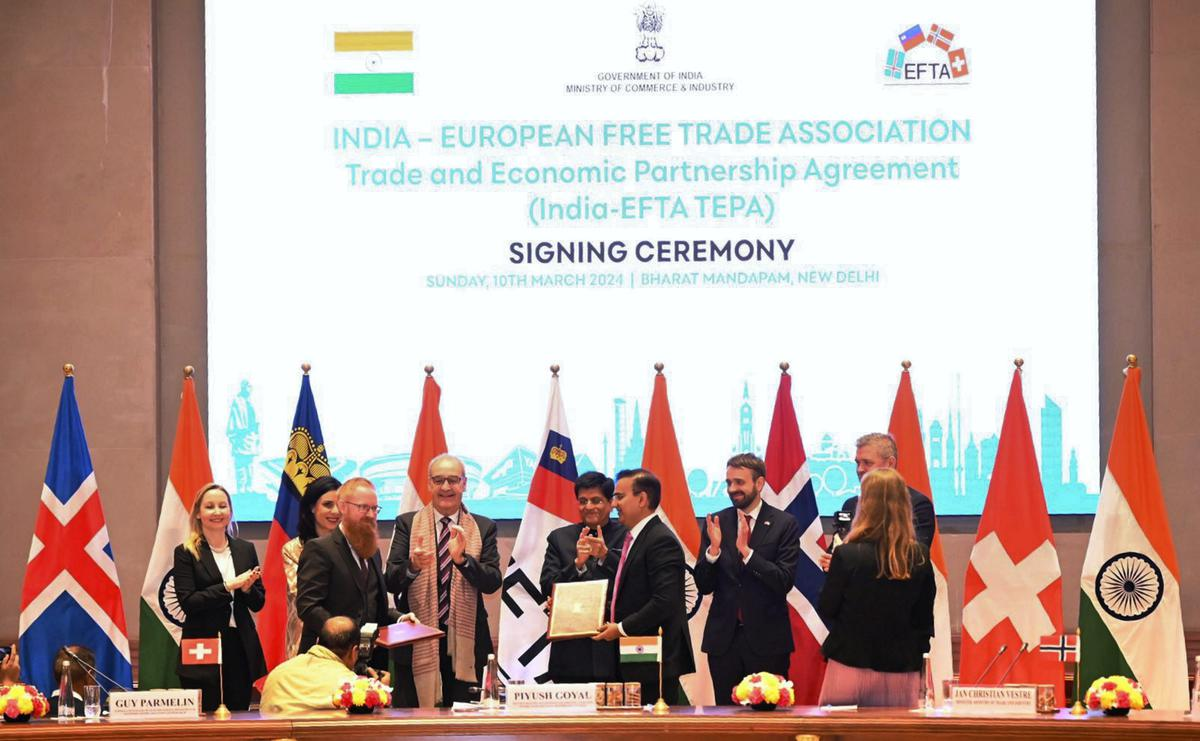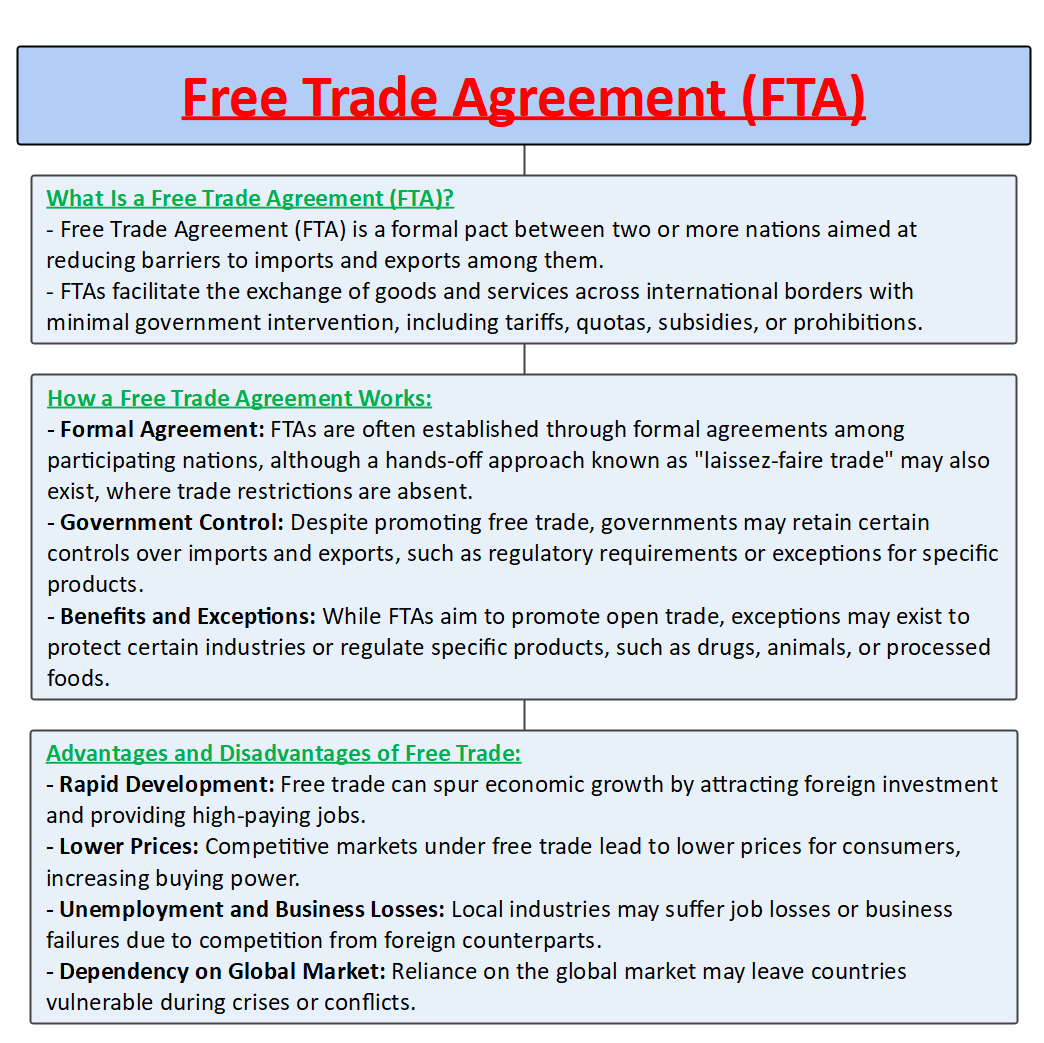Free Courses Sale ends Soon, Get It Now


Free Courses Sale ends Soon, Get It Now



Copyright infringement not intended
Picture Courtesy: https://www.thehindu.com/news/national/what-do-ftas-with-european-countries-signal-explained/article67964270.ece/amp/
Context: The India-EFTA Trade and Economic Partnership Agreement (TEPA) aims to boost trade and investment between India and EFTA members Switzerland, Norway, Iceland, and Liechtenstein.
Key Components of India-EFTA Trade and Economic Partnership Agreement (TEPA)

Challenges
Way Forward
Conclusion
Must Read Articles:
INDIA’S TRADE AGREEMENT WITH EFTA: https://www.iasgyan.in/daily-current-affairs/indias-trade-agreement-with-efta#:~:text=Context%3A%20The%20Trade%20and%20Economic,cooperation%20between%20the%20two%20countries.
|
PRACTICE QUESTION Q. While Free Trade Agreements (FTAs) can open up new opportunities, they can also result in employment losses in particular industries due to increasing competition. How to reduce employment losses in sensitive industries while increasing employment in a free trade environment? |
© 2024 iasgyan. All right reserved